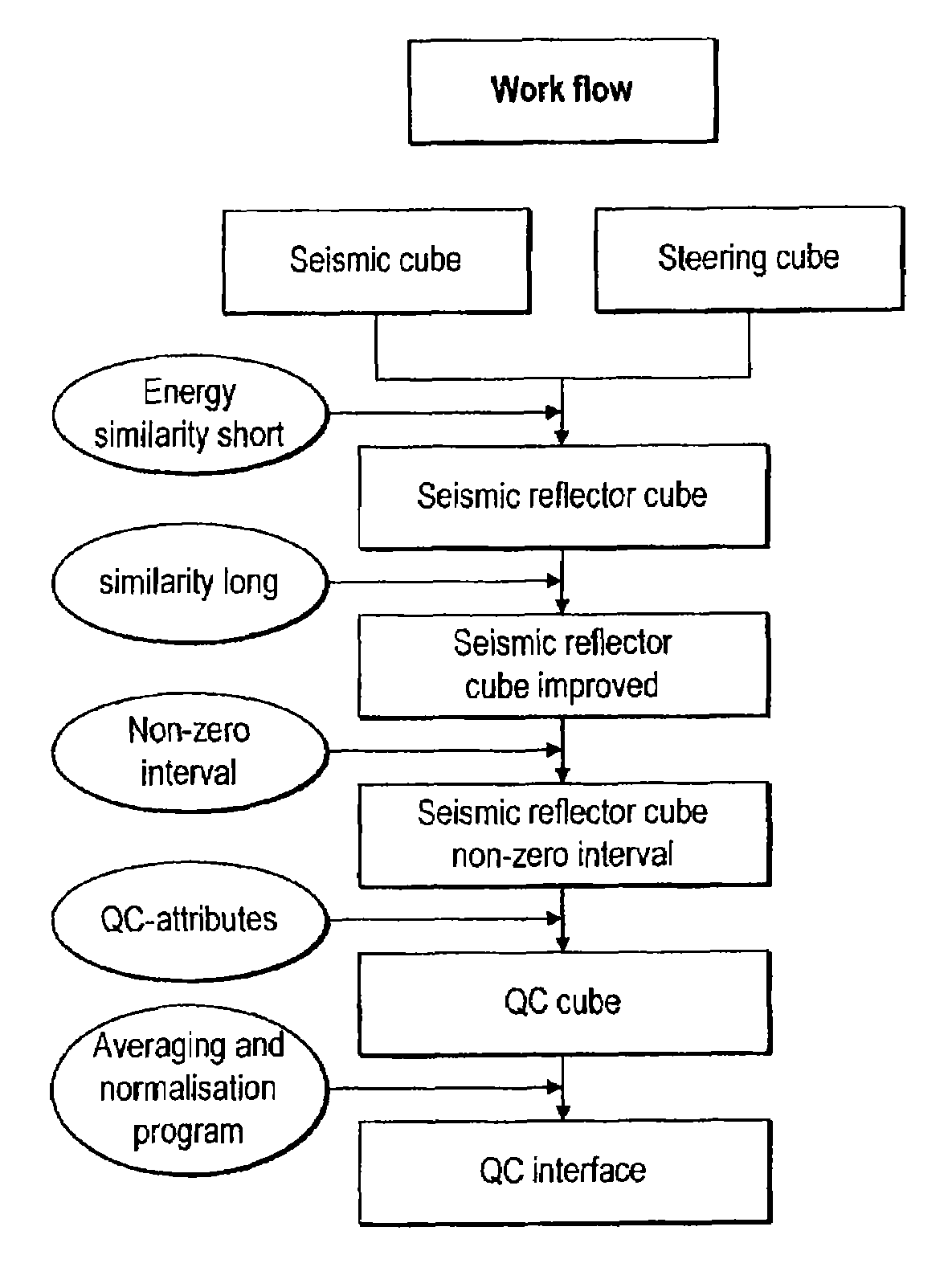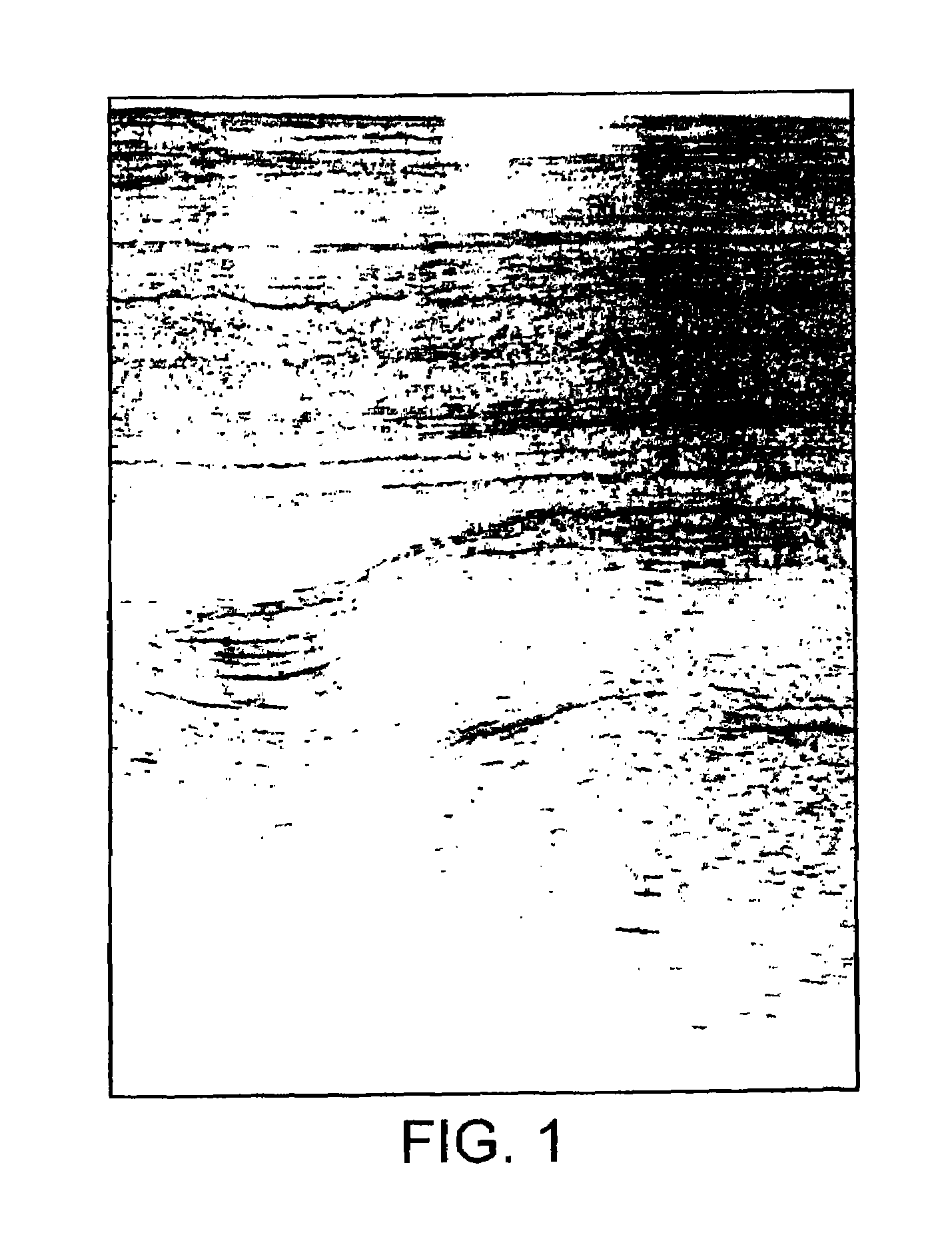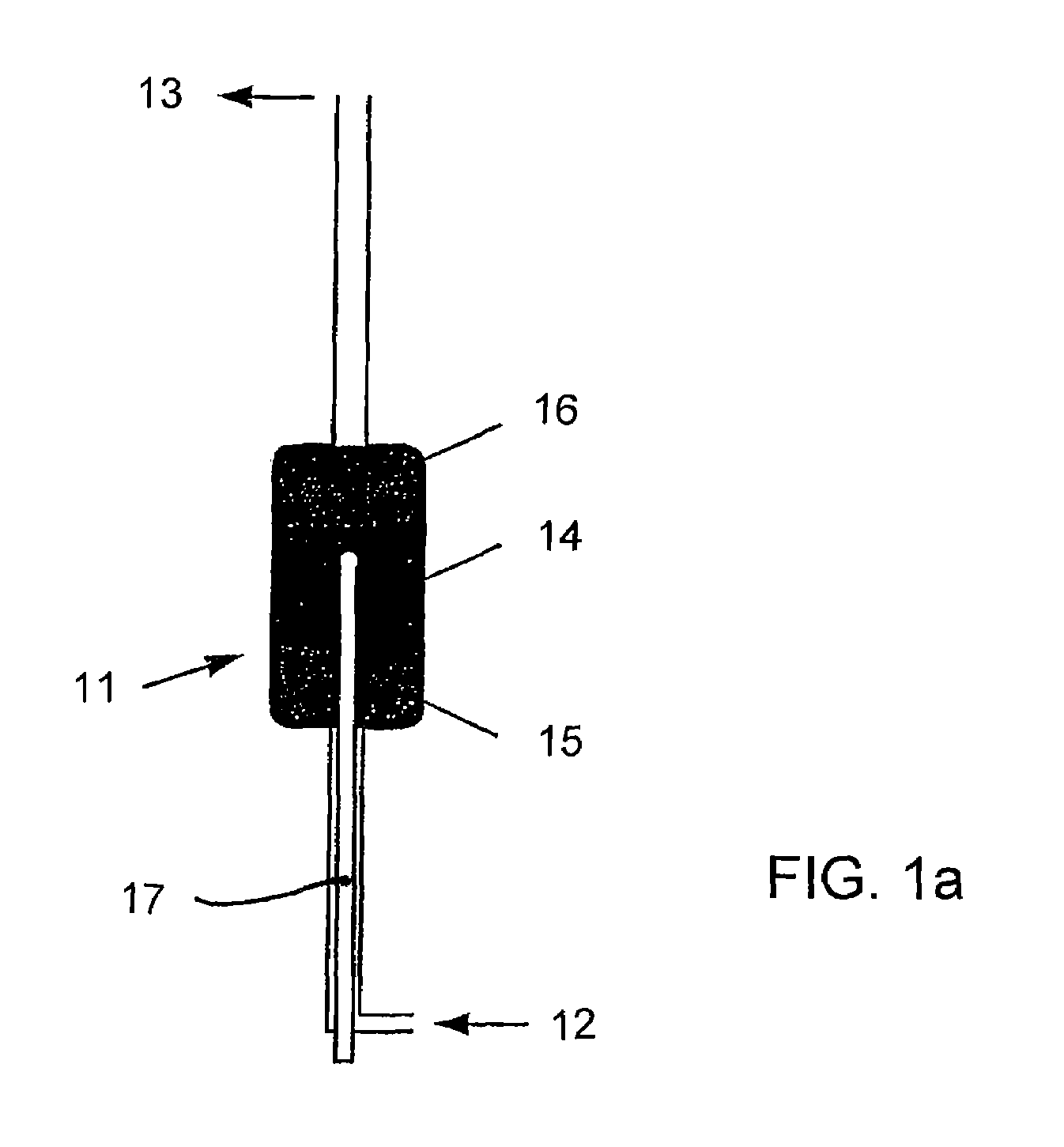Method of seismic signal processing
a technology of seismic signal and processing method, applied in the field of seismic signal processing, can solve the problems of seismic image degradation or distortion, inaccuracy or technological limitations may have quite complicated degradation effects on seismic images, and the processing requires extensive computer resources
- Summary
- Abstract
- Description
- Claims
- Application Information
AI Technical Summary
Benefits of technology
Problems solved by technology
Method used
Image
Examples
Embodiment Construction
[0032]The errors and limitations in obtaining the raw data may include, for example, human error, inaccuracy and technological limitations. The size of the “cobwebs” is dependent on such factors as the geometry of the acquired data (e.g. where the data is acquired in the vertical or horizontal directions) and the sound velocity in the subsurface. The size of the cobwebs is in the order of the maximum source receiver offset and the vertical extension equal to the size of the trace length. The cobwebs may be difficult to identify by eye and even more difficult to detect by standard quality measurements, due to lateral variations in geology.
[0033]Quality measurements are performed along the detected reflectors within the particular data volume and the measured quality is normalised in time or depth intervals within the data volume. The normalised quality measurements are in turn stacked and the stacked measurements are then related to a surface point above the centre of the cobweb data...
PUM
 Login to View More
Login to View More Abstract
Description
Claims
Application Information
 Login to View More
Login to View More - R&D
- Intellectual Property
- Life Sciences
- Materials
- Tech Scout
- Unparalleled Data Quality
- Higher Quality Content
- 60% Fewer Hallucinations
Browse by: Latest US Patents, China's latest patents, Technical Efficacy Thesaurus, Application Domain, Technology Topic, Popular Technical Reports.
© 2025 PatSnap. All rights reserved.Legal|Privacy policy|Modern Slavery Act Transparency Statement|Sitemap|About US| Contact US: help@patsnap.com



